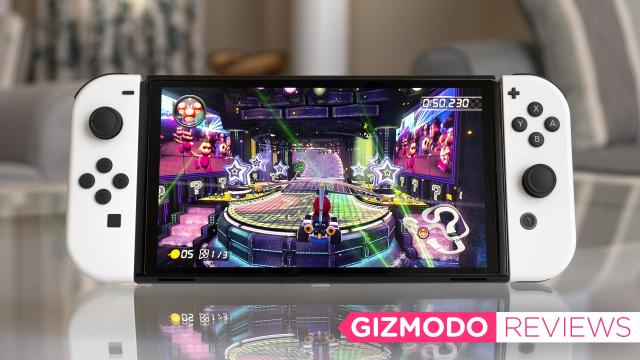It’s not uncommon for console makers to release refreshed hardware late into a gaming machine’s life cycle: the countless iterations of the Nintendo GBA, DS, and 3DS are all proof of that. So with the Nintendo Switch well into its fifth year, and rumours of an upgraded pro version still just rumours, Nintendo is clearly aiming to rekindle hardware sales for the holiday season with the Switch OLED. It’s not a complete overhaul, but if you’re mostly a handheld Switch gamer that upgraded screen is a genuine treat for the eyes that’s going to be hard to resist.
Those who’ve been enjoying Nintendo’s portable consoles for decades are keenly aware the company is not one to embrace the latest and greatest screen technologies. The original Game Boy’s display was an eyesore, and the dual screens on the Nintendo DS looked three generations older than what Sony used on the flashy PSP. So while it was disappointing that the original Switch, and even the Switch Lite, stuck with LCD panels, it’s nice to finally see Nintendo embrace OLEDs. Whatever the next generation Switch ends up being, it’s safe to assume Nintendo is going to use an OLED — now that gamers have seen the difference, there’s no going back.
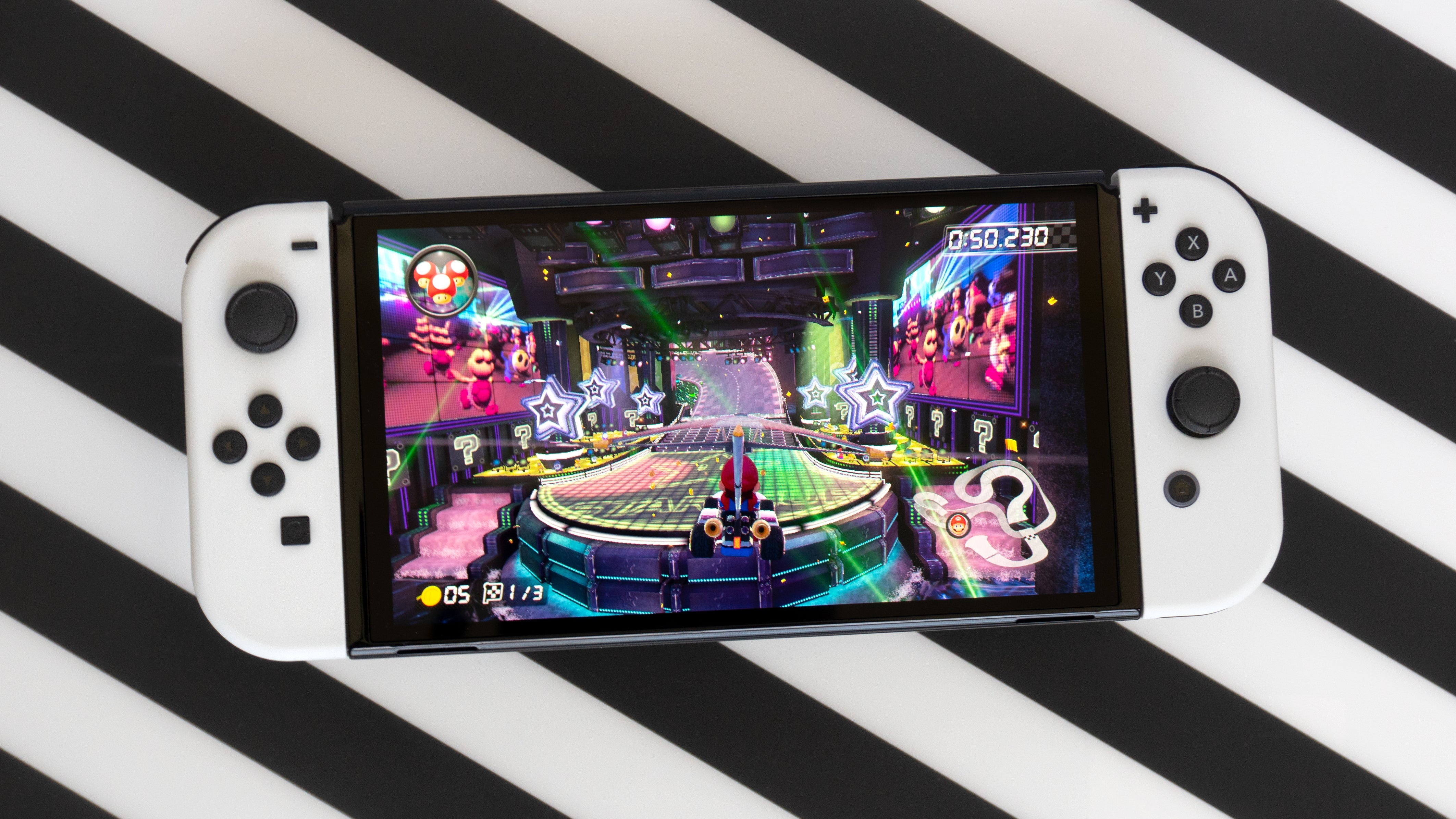
Nintendo Switch OLED
WHAT IS IT?
A Nintendo Switch with a larger, beautiful 7-inch OLED screen, a vastly improved kickstand that's finally a feature you'll want to use, and an upgraded dock
PRICE
$539
LIKE
OLED screen makes the console feel more 'pro' even if the screen resolution and the console's performance specs haven't changed at all; new kickstand makes the original one feel like an embarrassing afterthought
DISLIKE
The screen is still limited to 720p, which is sometimes very apparent; jury is still out on Joy-Con drift
That Beautiful Screen
There are a few reasons to justify dropping an extra $US50 ($66) on the new $US350 ($464) Nintendo Switch OLED over the original model (technically the second-generation model) which is still available to buy, but none are as compelling or convincing as that new OLED screen.
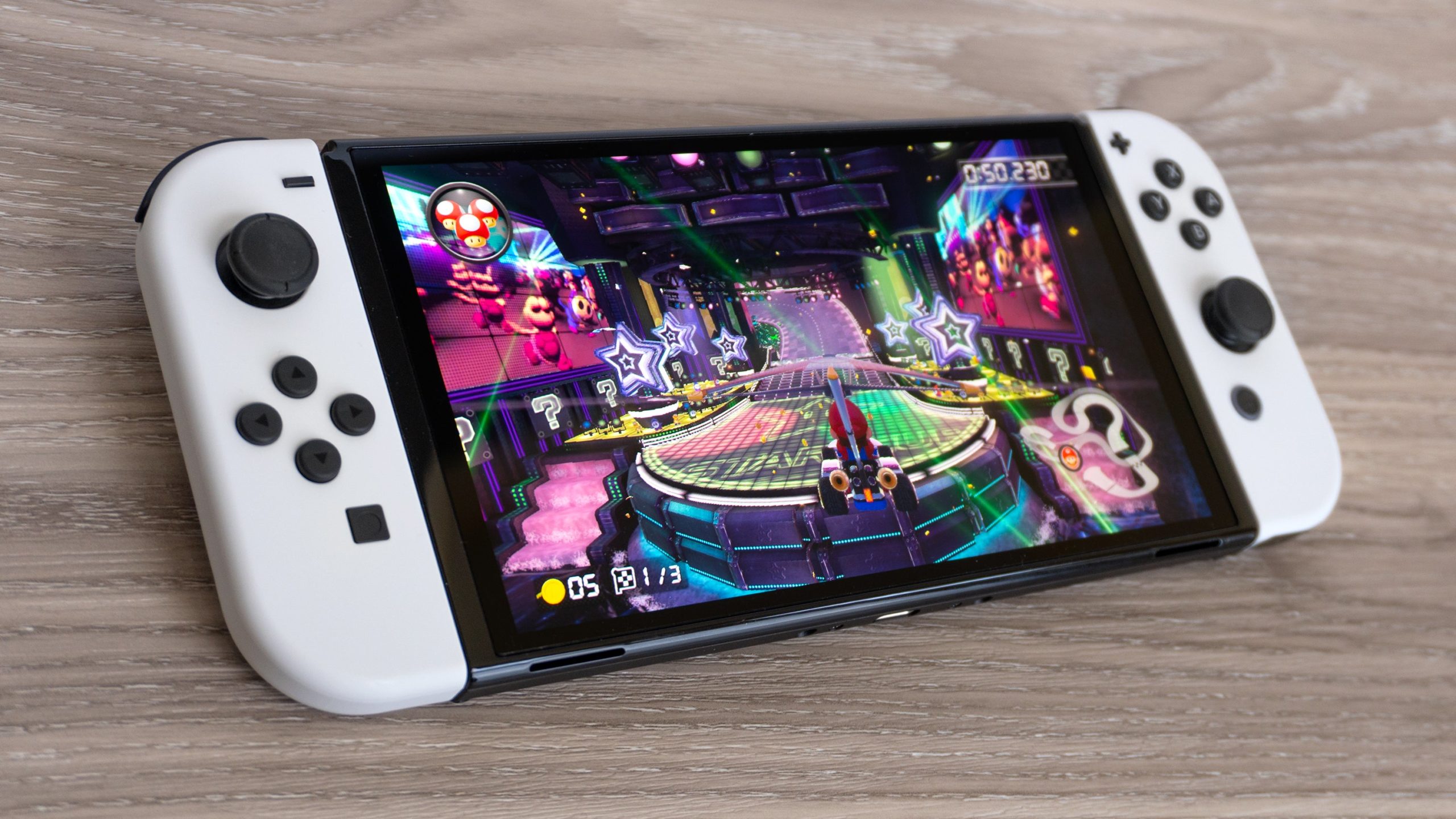
At 7 inches, the OLED screen is larger than the original Switch’s 6.2-inch LCD display and dramatically shrinks the black bezel around the screen. The OG Switch and the new Switch OLED are nearly identical in size, so the reduced bezels make the screen upgrade feel even more impressive in scale.
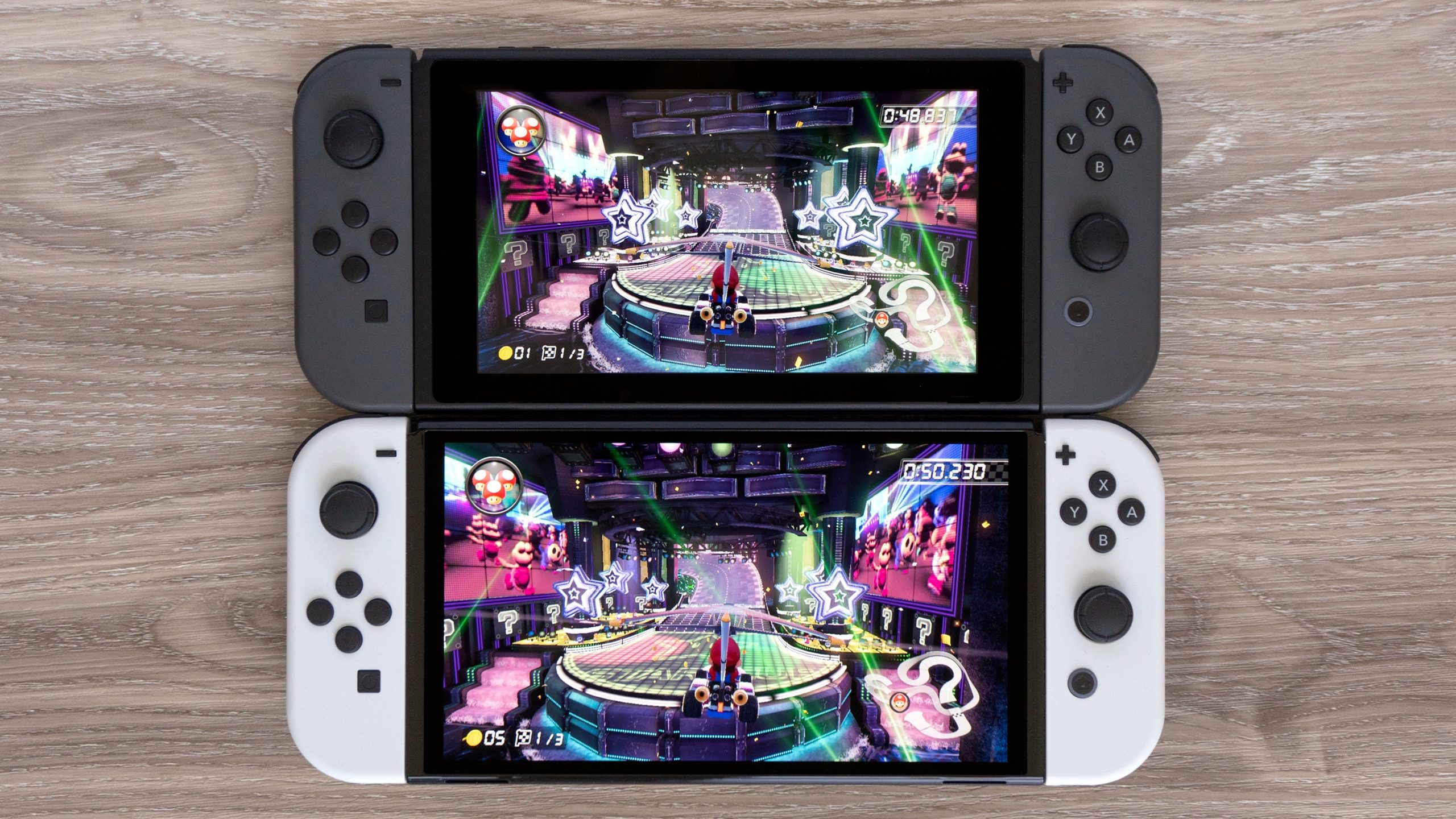
It doesn’t take long for your brain to adjust to the larger screen size and stop noticing it, but even after a week of playing a library of games that I’ve been enjoying for years, my eyes still marvel at that OLED screen every time I turn the Switch on. By now we all know the benefits of OLED displays — increased colour saturation, brighter whites without any odd colour tints, and outstanding contrast — but seeing it used on a Nintendo portable is just magical. I suspect my eyes and brain have just been trained to not expect much in terms of screen quality from a Nintendo handheld, and now they’re reveling in the upgrade. The bar has been significantly raised.
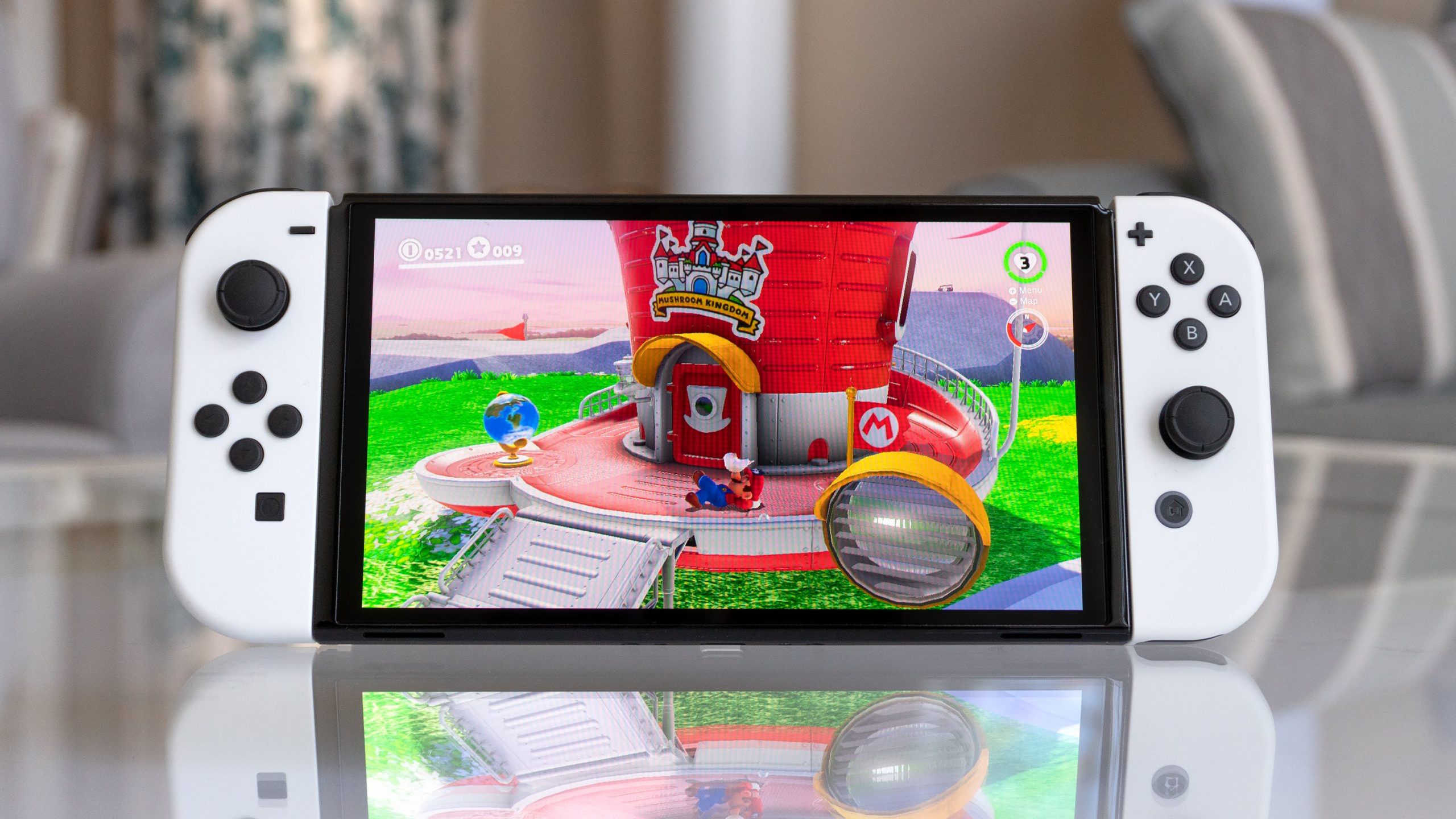
Fans of moodier games where baddies are hiding in the shadows will immediately see the benefits of the OLED as darker areas of the screen completely disappear and blend into the black bezel. But it’s the deeper colour saturations that make my eyes feel like it’s Christmas morning every time I turn on the console. Even the shortcut icons on the home screen look richer and more inviting, but colourful games like Super Mario Odyssey seem like an entirely new experience on the Switch OLED. The red of Mario’s jumpsuit feels like it’s burning into my retinas as I play. I not only welcome it, but also feel pity for what my eyes had to endure with the original Switch. (OK, OK, the original Switch wasn’t that bad, but the difference between the old and new is stark.)
What hasn’t changed is that in handheld mode the Nintendo Switch OLED still only offers 720p resolution, which is less than what you’ll get from even smartphone games. Nintendo seemingly didn’t want to tweak the console’s processing power to bring 1080p gameplay to its built-in screen (that’s still only available in docked mode), which would presumably also be a hit on battery life. For that we’ll still need to keep our fingers crossed that the long-rumoured next-gen Switch delivers those graphical improvements.
A Kickstand That’s No Longer an Unusable Afterthought
I often compare the kickstand included on the original Nintendo Switch to every essay I wrote in college: It seems like it was thrown together at the last minute in an absolute panic to fulfil some forgotten obligation. But while I could usually pull off a solid C with my work, the old kickstand barely mustered a passing grade.

It was flimsy, offered only one angle of support, and, to be perfectly honest, not worthy of a mention as an official feature. I tried it once after unboxing the original Switch four years ago, decided it wasn’t worth risking my $400 console on a thin plastic leg, inserted a microSD card, and haven’t touched it since.
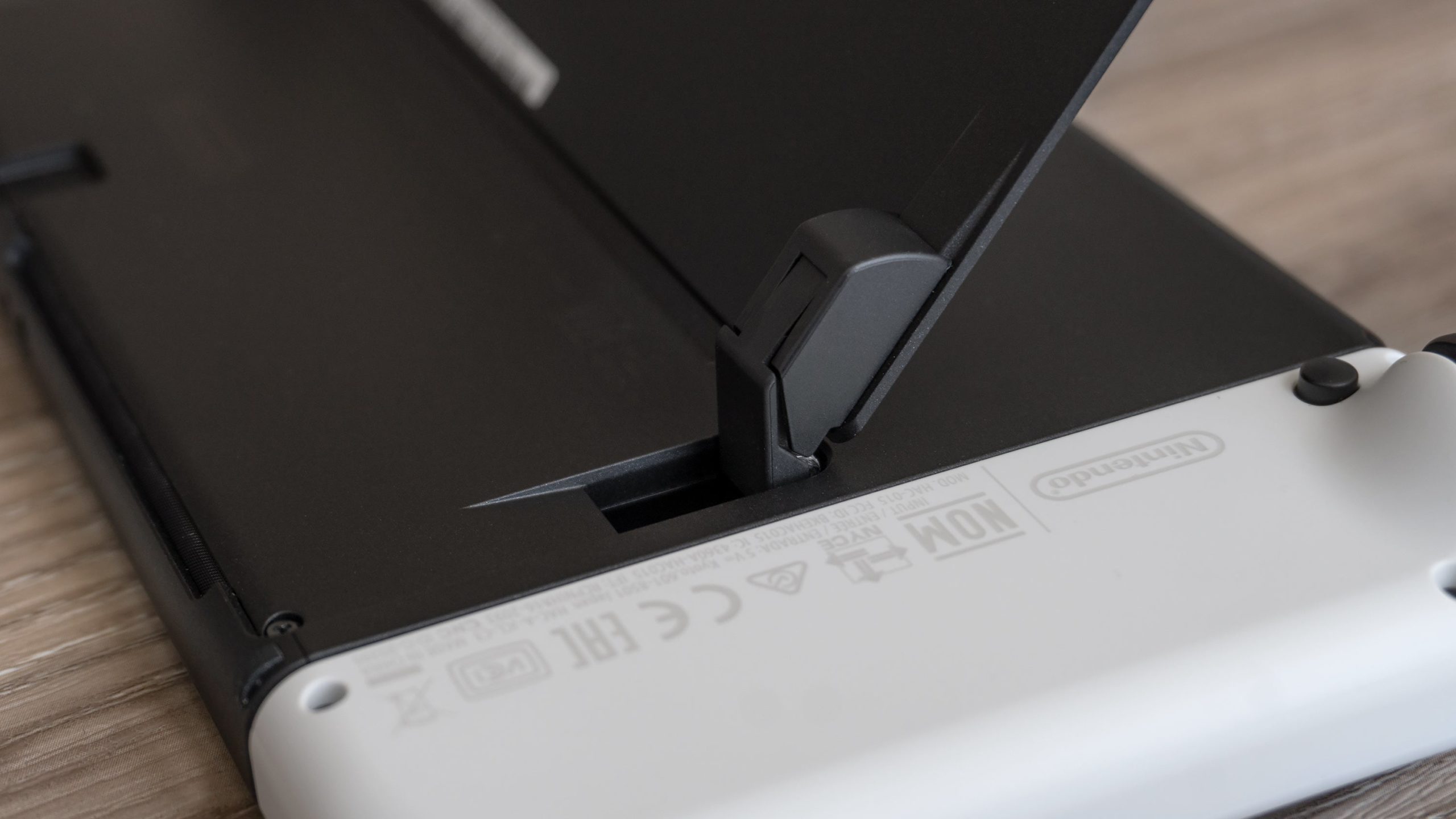
The kickstand on the Switch OLED has been completely redesigned and it’s… kind of fantastic? It runs the entire width of the back of the console and uses the same style of incredibly sturdy hinges that you’ll find on devices like the Microsoft Surface.
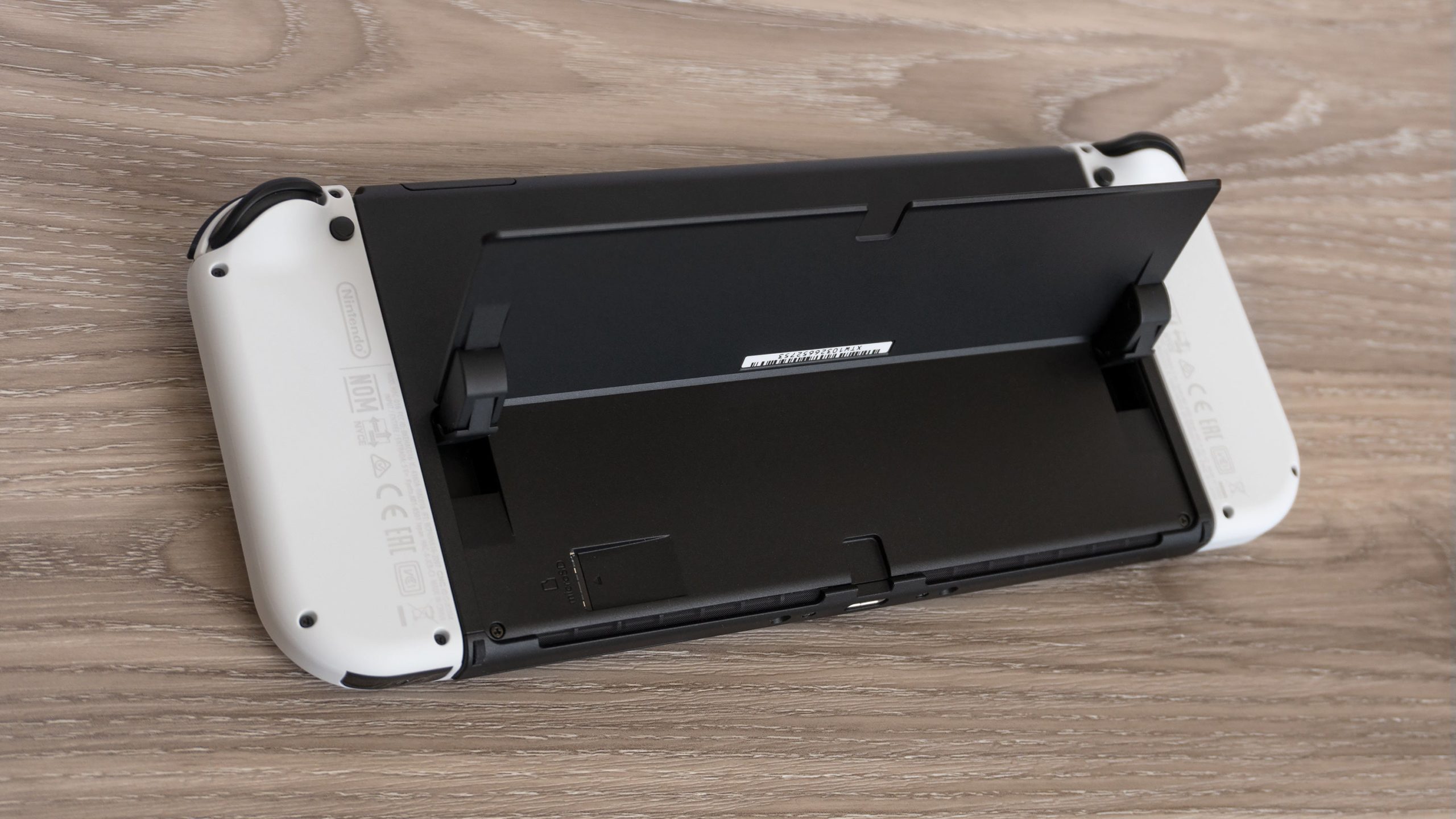
As a result, the kickstand can be securely positioned at almost any angle, and offers around 150 degrees of movement. It now generally delivers on the Switch’s original promise of being a console you can take and play anywhere with friends with the Joy-Cons detached.
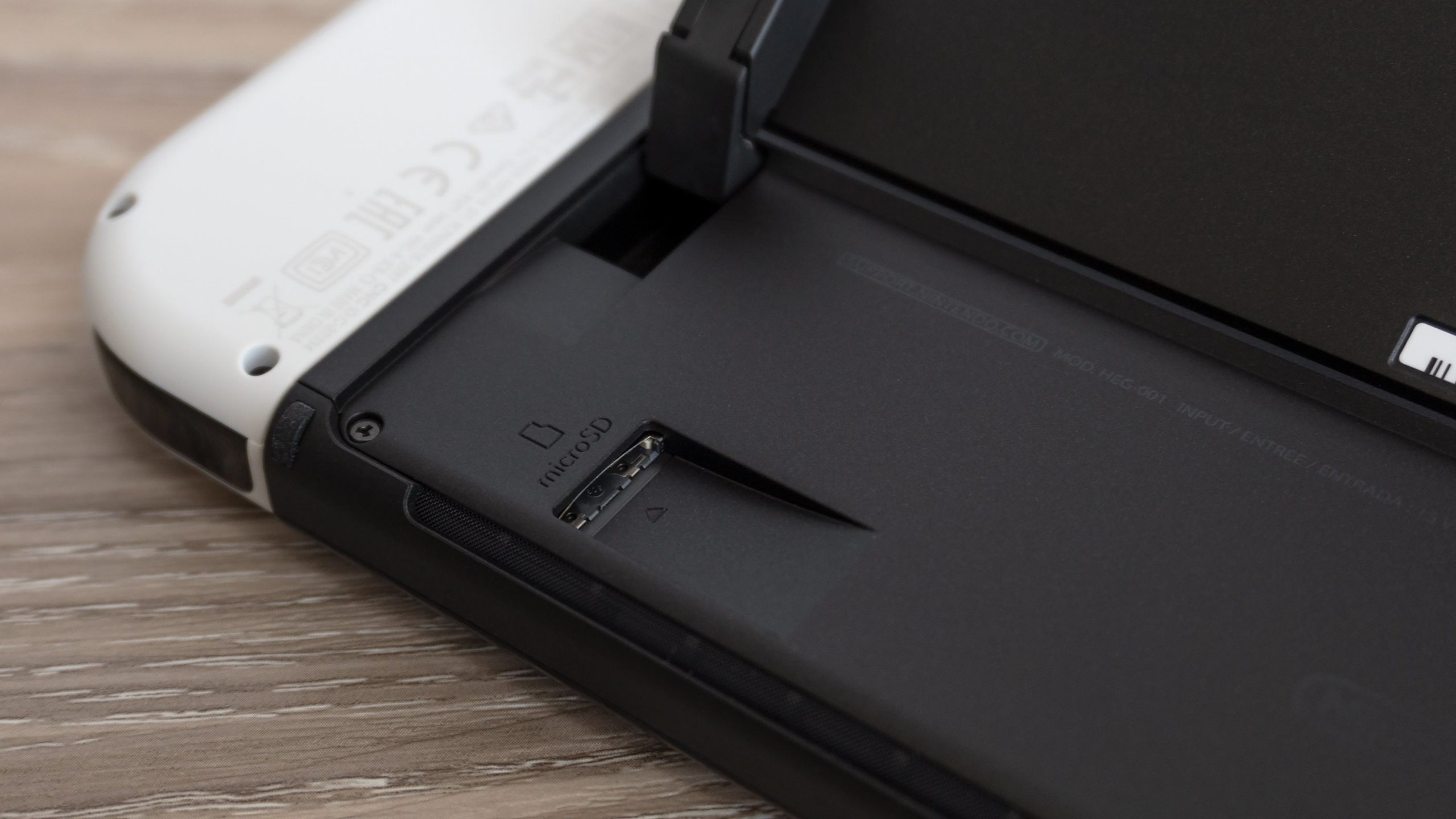
The redesigned hinge has also seen the Switch’s microSD card slot turned 90 degrees to the side. Functionally it’s no different, but it does reduce the risk of accidentally getting a finger under the card when trying to pull out the kickstand, so it’s got that going for it… which is nice.
A New Dock Has Appeared
Although the new Switch OLED is also available in a version with neon blue and red Joy-Con controllers and a grey dock, the new white option feels better matched to its brighter OLED display, and it comes with a matching white dock.

Functionally, the dock is the same, you just plop your Switch OLED in it (it’s compatible with the original Switch as well) and your gameplay will be re-routed to whatever display you have connected via HDMI. Aesthetically, it’s got some more rounded corners, but the bigger upgrades are found ‘round back.

Instead of a hinged door that was occasionally hard to open depending on where your dock was sitting, the new dock features a snap-in panel that comes right off giving slightly easier access to ports for USB-C power, HDMI, and a newly added spot for an ethernet cable. If you’ve always had issues with your Switch and your wifi network, this could be a welcome upgrade, although it’s probably not the speed of your wireless network that makes downloading Switch games from the online store such a long, gruelling process.
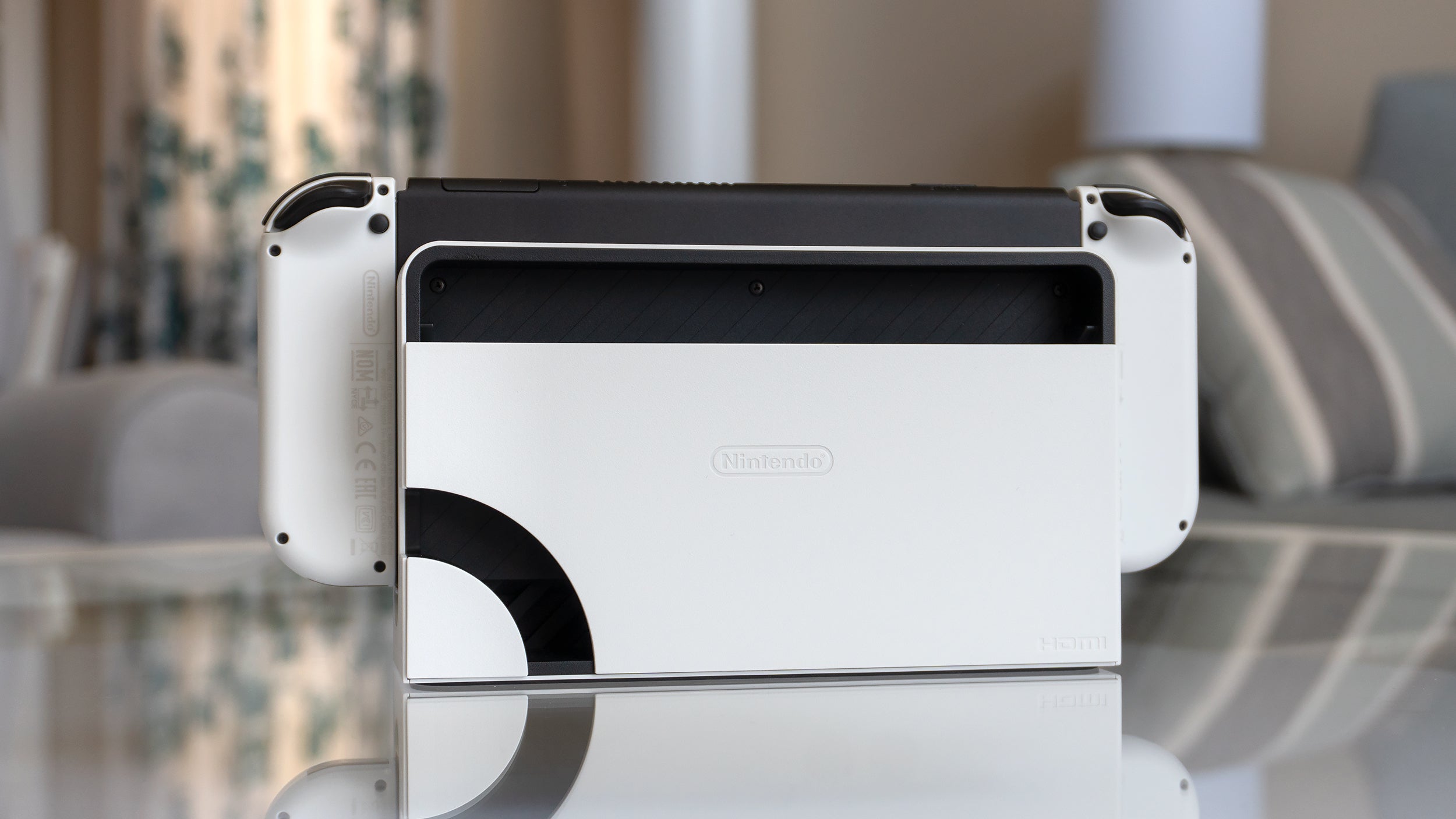
With the back panel re-attached, the new Switch dock also has a larger cutout to make routing several cables through it much easier. Long ago I forcefully removed the hinged cover on my Switch dock to make things easier, and it seems I wasn’t the only one with similar complaints given this improved redesign.
Other Tweaks, Improvements, and Upgrades
There are some less obvious improvements on the Switch OLED, and while they don’t necessarily justify the upgrade, they’re still very much welcome.
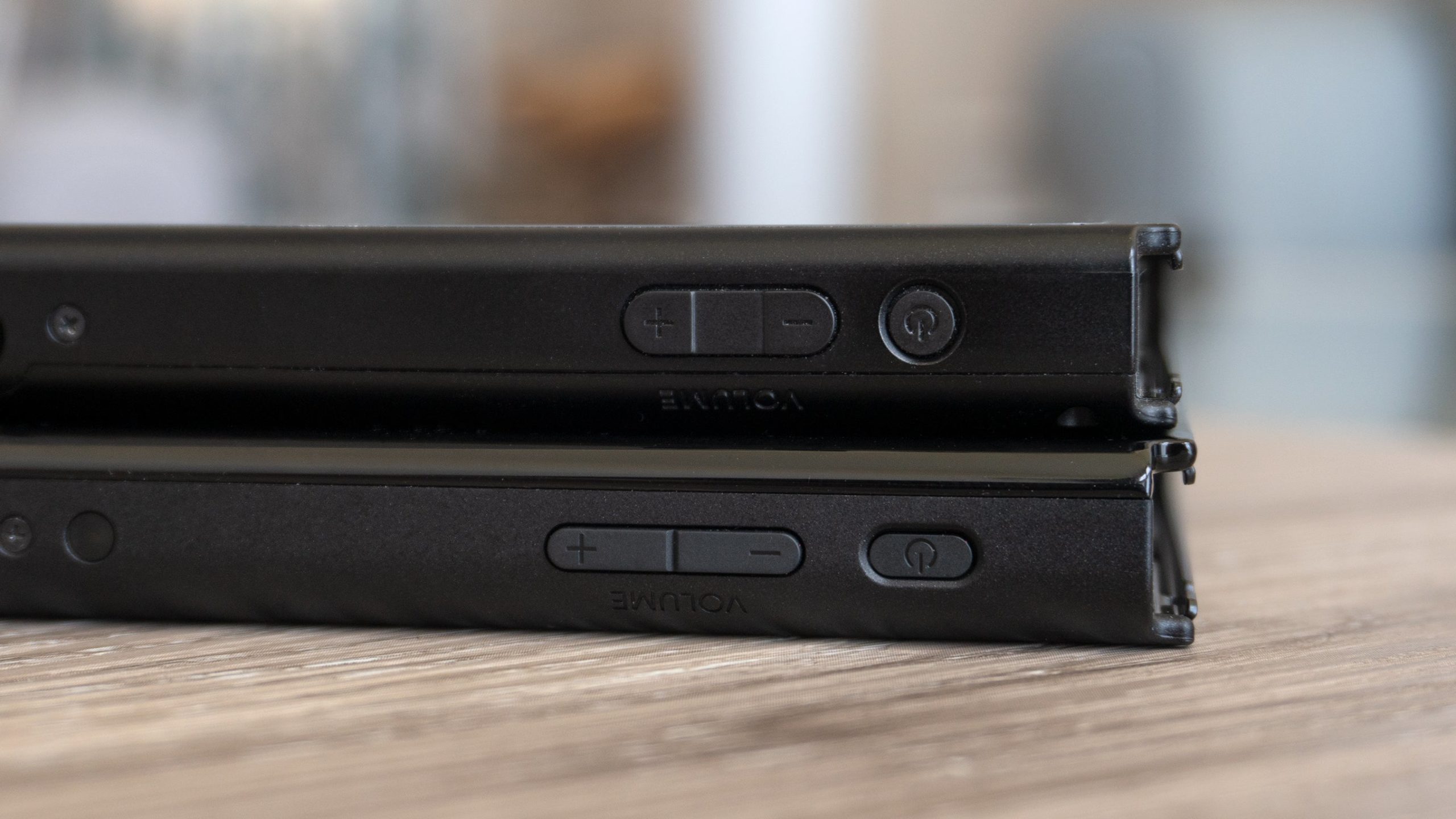
The power and volume buttons on top of the console have been elongated so they’re ever-so-slightly easier to differentiate and operate, while the Switch OLED sees a bump in built-in storage from 32GB to 64GB, which helps take a nibble out of the $90 price hike. The battery is also the same upgraded offering that was introduced with the 2019 refresh of the Switch, which promises anywhere from four to nine hours of playtime depending on the game and screen brightness. But that will potentially be on the longer end of the scale on the new Switch since OLED screens are far more energy efficient than LCDs.
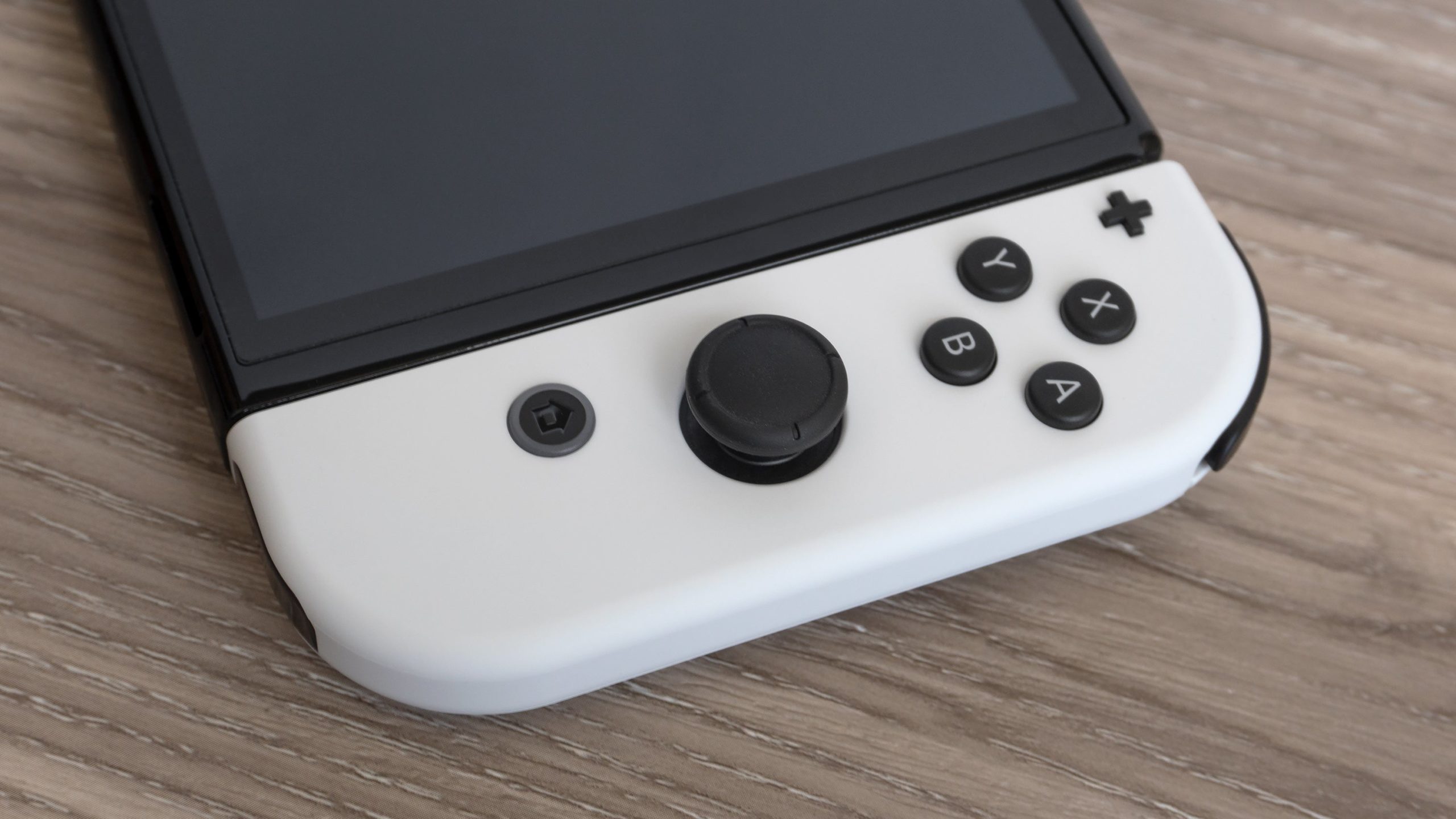
As for Joy-Con drift: There’s no indication that Nintendo has addressed this common issue at all in the Joy-Cons that ship with the new Switch OLED, which is a big disappointment. Selling a new console that will in all likelihood develop the same unsolvable issues as the previous generation hardware is a tough sell.
Is it Worth the Upgrade?
If you’re already a content user of the older generation Switch or the Switch Lite and don’t have $U539 to drop on a new console, then no, you don’t need the Switch OLED. The same goes for gamers, like myself, whose Switches have spent the vast majority of their lives sitting in the dock. You will see no gameplay, frame rate, or graphical improvements on a larger screen with the new Switch OLED.
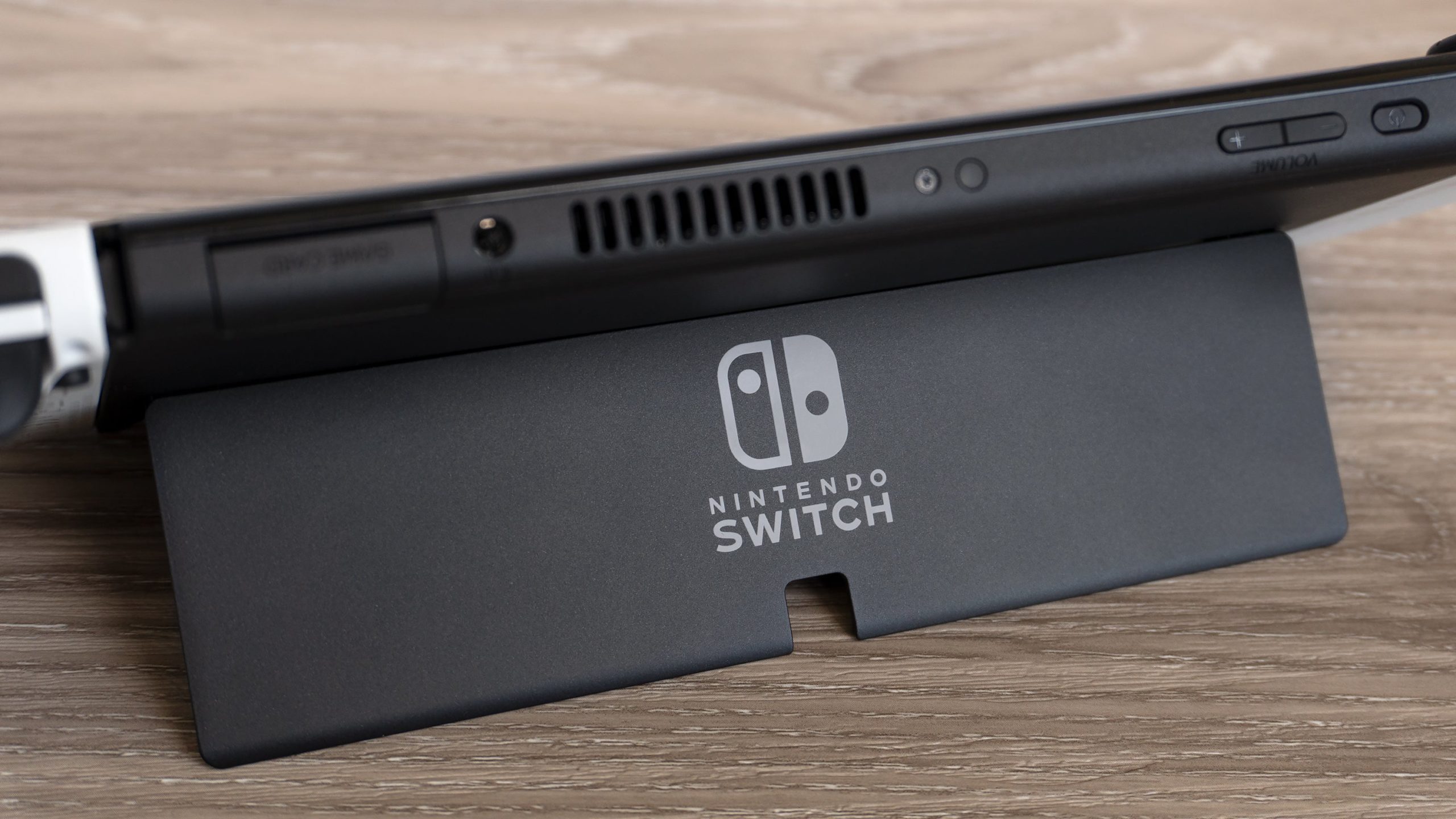
If, however, the Switch has become the ultimate portable gaming device for you, and you play mostly in handheld mode, that new screen makes the Switch OLED feel like an entirely new device, even if it’s really not. Hyrule and the Mushroom Kingdom suddenly feel like entirely new places you’ll want to explore again, like going for an IRL walk in the sun after several days of rain. If you’re itching for new hardware (and can’t wait for the Analogue Pocket any longer), it’s hard to imagine that any Switch fan would be disappointed were they to switch to this new version.
